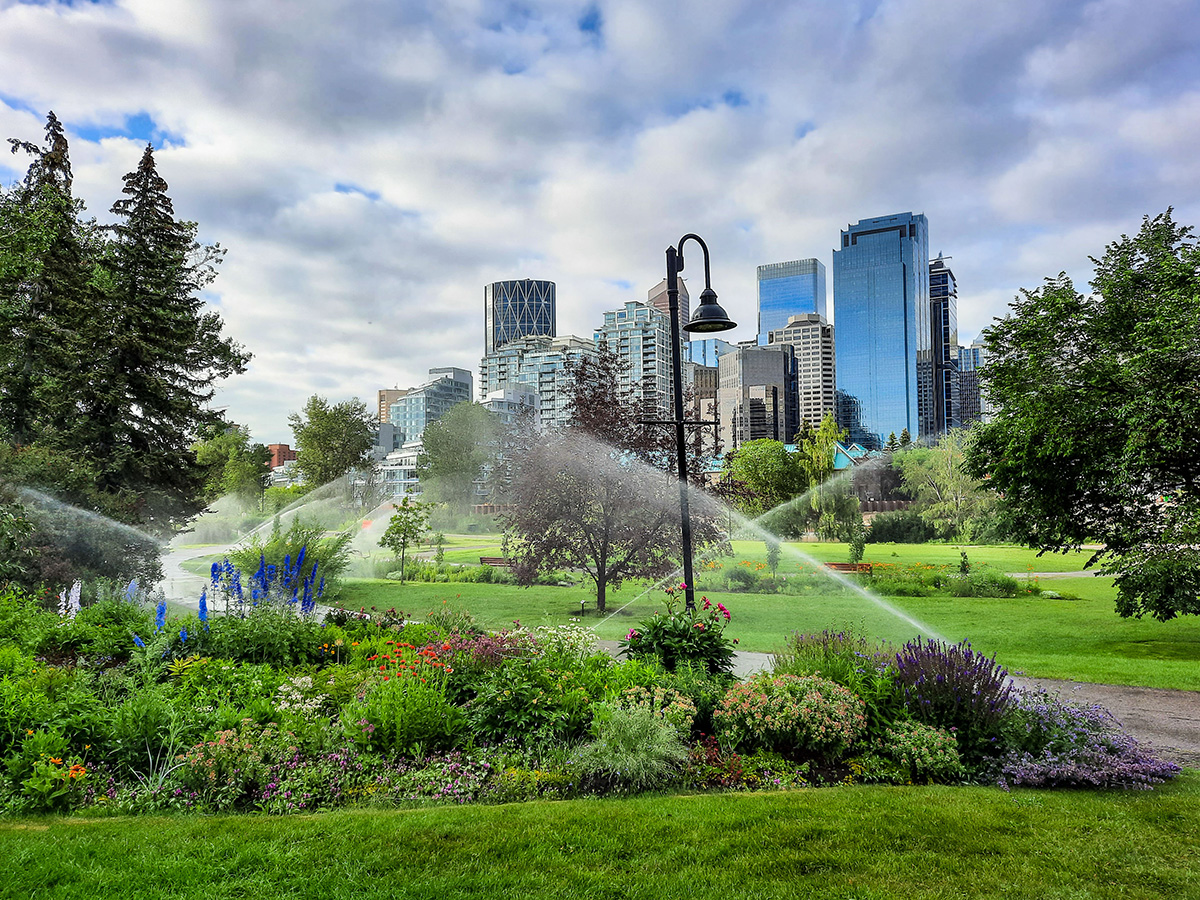How we prepare and respond to drought
We monitor conditions and coordinate with the region
We monitor watershed conditions and drought indicators regularly, and more frequently during the summer and periods of increased drought risk to help us prepare and inform our response. Some of these indicators include:
- River flows
- Mountain snowpack
- Precipitation
- Reservoir levels and storage throughout the basin
- Soil moisture
- The Canadian Drought Monitor
- Weather forecasts and seasonal outlook
When drought occurs, we work closely with the Government of Alberta and large water users downstream in the Bow Basin - primarily irrigation districts - to share the available water supply and reduce risks to the aquatic environment.
We're ready to elevate our water conservations efforts

Some examples of the actions we would take include turning off decorative fountains, reducing outdoor watering of flowers and turf in parks (where possible), adjusting mowing practices to promote deeper roots and require cutting less often, and reducing vehicle washing.
We encourage Calgarians to conserve water and use it wisely
Through various public awareness campaigns, we encourage Calgarians to make water efficiency a way of life to help make drought less disruptive to their homes and businesses.
-
Create a beautiful, water-wise yard that's easy to maintain and suited to Calgary's unique climate.
-
Buy a subsidized rain barrel at Green Calgary's annual sale.
-
Check for leaks, inside and outside your home, to help conserve water.
-
Get resources to help your business become more water efficient.
-
Learn about this City-certified program for highly water efficient irrigation systems.
We're ready to enact outdoor water restrictions
Depending on the conditions, Calgary has four stages of mandatory outdoor water restrictions that can be enacted in response to drought.
These restrictions place limitations on how and when water can be used outdoors, and are enforceable under the Water Utility Bylaw 40M2006. Restrictions apply to Calgary residences, businesses and City operations.
At times, this can be critical to maintain sufficient water for essential needs related to human health and life safety, such as drinking water, fighting fires, and supporting hospitals.
Reducing outdoor water use helps match city-wide demand to the available water supply.
Restrictions during drought can also help us do our part to maintain sufficient water in the river for downstream neighbours and the environment.


